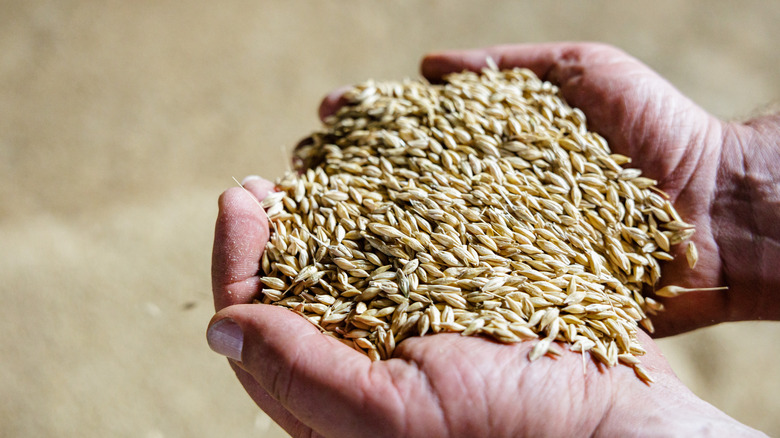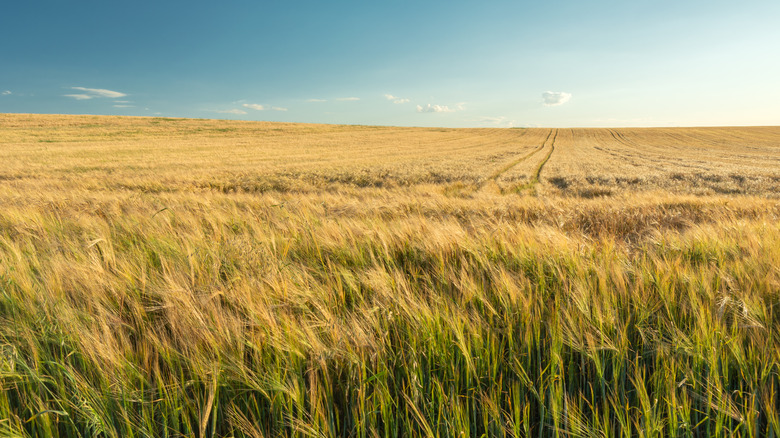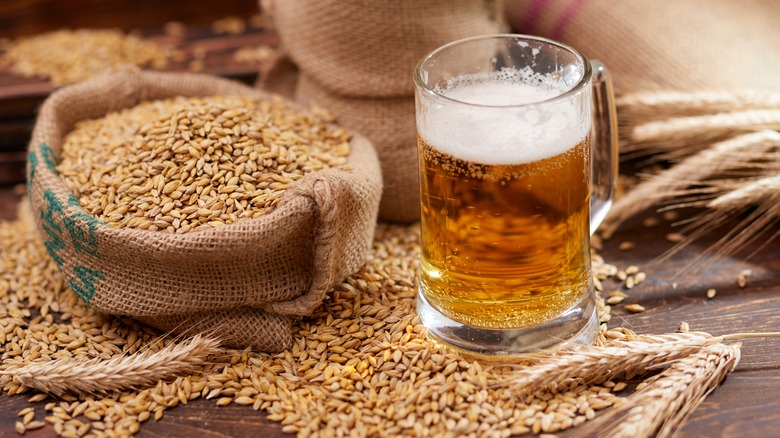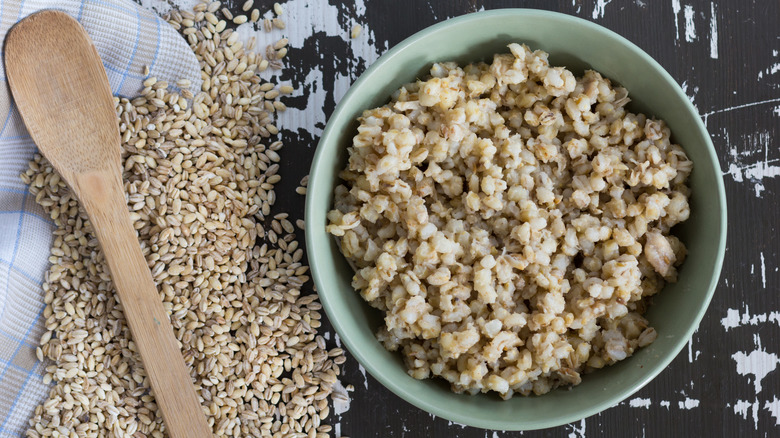Most Of The World's Barley Comes From This Country
Grains are no joke. We have relied on them since the beginning of agriculture to supply us with the nutrients we need to survive. Barley (Hordeum vulgare) has been around for thousands of years and has continued to stay with us till today, and we live for it. Humans love barley. We really do. We use it to make a variety of well-beloved products like bread, beer, liquor, and soups all of which we've grown obsessed with as a global society. It tastes nutty and fibery in the best kind of way no matter what it's mixed into.
But what is barely at its core? According to Healthline, barley is a kind of tall grass, the kind you'd imagine seeing if you were driving across Midwestern America through fields of tall green fronds. We consume the seeds that grow at the top of the stalk, and these seeds have some great health benefits including controlling blood sugar, improving digestion, and lowering cholesterol. So, we know what we use barley for, but where does it come from?
Who grows the most of it?
According to the Food and Agricultural Organization of the United Nations Russia, followed closely by Germany, Canada, and France is the largest barley producer in the world. Russia dominates production when it comes to other products as well including oats and, oddly, sugar beets too. Russia alone grew 20.6 million metric tons of ancient grain between 2020 and 2021, per Statista.
For those of you whole are wondering how in the world a country known for its viciously cold climate is capable of successfully growing such vast amounts of cereal grains, Britannica says that barley is a remarkably adaptable plant. The grain is capable of tolerating climates ranging from subtropical to subarctic! Because of the crop's ability to survive in cool temperatures, Russians grow large amounts of barley in southwestern farmlands, with acres of grain stretching from the border of Ukraine to Mongolia, as reported by the U.S. Department of Agriculture.
The Origins of Barley
Despite its popularity in Russia today, barley is believed by Thought Co. to have originated in the Fertile Crescent where the grain became one of humanity's primary crops. Though it is thought to be first purposefully cultivated about 10,000 years ago, the grain actually grew wild throughout Eurasia and was eaten well before proper domestication. According to Facts & Details, barley may have begun to be farmed around the Tigris and Euphrates rivers, but the grain quickly spread by 7000 B.C., and by 6000 B.C. it had reached the Black Sea and beyond.
Now, it's hard to believe that after so many centuries, the barley plant hasn't changed much, but Smithsonian Magazine reports exactly that. It says that scientists researching near the Dead Sea discovered barley seeds dating back over 6,000 years that proved to be genetically very similar to the crops we grow today! This is even more remarkable when you think about how the banana, watermelon, and corn have transformed over only the past few centuries after human intervention. The fact that barely has changed so little after so long speaks to its timelessness as a culinary staple.
Russia's relationship with Barley
Russia's weather isn't exactly ideal when it comes to growing produce. Climate Policy Watcher describes the country as having little annual precipitation and cold summers and winters in over 31% of its territory. But luckily barley can withstand the temperamental Russian climate, and because of this, the country's barley crop tripled from 1940 to the 1980s.
With barely being in such a large production in Russia it makes sense that it is also a large part of their diet and culture too. Famous Wonders claims that the basic Russian diet revolves around root vegetables and grains. Specifically, things like buckwheat, barley, rye, cabbage, onions, potatoes, turnips, and beets are foods that are hearty enough to survive the cruel climate. We then get to see what recipes Russians have come up with to enjoy these crops including Pearl Barley Kasha (Перловая каша) which the Russian Recipe Book lists as barley grits that are slow-cooked in milk to soften them. It is said that it was a dish well-liked by Peter the Great. Another barley recipe is Mushroom Barley Soup (Грибной Суп с Перловкой) which is fantastic during the bitter winter and involves a broth full of Chanterelles (lisichki), potatoes, barley, onions, and bacon (via Olga's Flavor Factory). Barley, while a simple ingredient, is a huge part of agricultural production in Russia, and a key factor in feeding its people.



